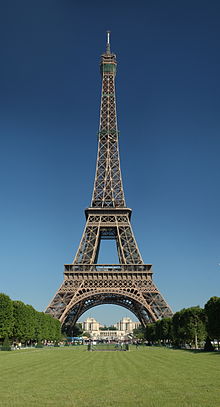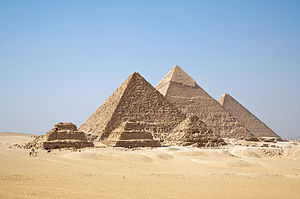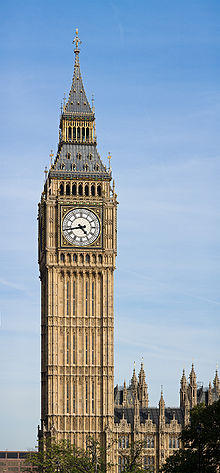
ТОР 5 статей:
Методические подходы к анализу финансового состояния предприятия
Проблема периодизации русской литературы ХХ века. Краткая характеристика второй половины ХХ века
Характеристика шлифовальных кругов и ее маркировка
Служебные части речи. Предлог. Союз. Частицы
КАТЕГОРИИ:
- Археология
- Архитектура
- Астрономия
- Аудит
- Биология
- Ботаника
- Бухгалтерский учёт
- Войное дело
- Генетика
- География
- Геология
- Дизайн
- Искусство
- История
- Кино
- Кулинария
- Культура
- Литература
- Математика
- Медицина
- Металлургия
- Мифология
- Музыка
- Психология
- Религия
- Спорт
- Строительство
- Техника
- Транспорт
- Туризм
- Усадьба
- Физика
- Фотография
- Химия
- Экология
- Электричество
- Электроника
- Энергетика
Compound adjectives
Adjective / adverb + past participle
Adjective or adverb plus past participle is one of the most common patterns for forming compound adjectives. Some common examples would include:
Most animals are warm-blooded but reptiles are cold-blooded. He was an old-fashined house, but was kind-hearted and open-minded. He was a cold- blooded murdere and showed no emotion of any kind. There are sometimes many possible combinations, e.g. broad-minded, narrow-minded, absent-minded, strong-minded, as well as open-minded. It is partly a matter of knowing which adjectives or adverbs go with which participles and nouns. We have brightly-lit streets, but also brightly-colored dresses. Compound adjectives are regarded as productive features of English which means that use is not so restricted as it is in many categories of grammar. New combinations are always possible. |
Complete the sentences with appropriate compound adjectives: four-foot, open-minded, brightly-lit, green-eyed, all-too-common, part-time, cold-blooded, well-behaved.
1 This is a … table.
2 Daniella is a… worker.
3 This is an … error.
4 Beware of the … monster.
5 He is a … man.
6 I love this … room!
7 Danny’s dog is ….
8 You have to be … about things.
 Exercise 1. [ T.26] Listen to a historian who has written a book about captain Scott. Underline the things he mentions.
Exercise 1. [ T.26] Listen to a historian who has written a book about captain Scott. Underline the things he mentions.
| preparation planning animals arguments diaries geography accident food money time of year clothes transport weather Scott’s personality |
Exercise 2. Answer the questions to the listened text.
1 When did Captain Scott reach the South Pole?
2 Why did Amundsen arrive to the South Pole first?
3 Why does the historian think Captian Scott’s personality was partly to blame for the tragedy?
4 Should Scott be criticized rather than glorified?

Exercise 3. Talking about an impressive historical monuments you’ve seen: place of location, some interesting facts, special features.
 Exercise 4. Read the text and translate the 1st paragraph of the text.
Exercise 4. Read the text and translate the 1st paragraph of the text.
 Khodja Akhmed Yasaui Mausoleum
Khodja Akhmed Yasaui Mausoleum
Turkistan is a sacred place of worship and pilgrimage for Muslims. It is situated 160 km (100 miles) north-west of Chimkent. The site of ancient settlement Turkistan is an important archeological monument of the urban culture of South Kazakhstan. It was the center of the economic and political development, a trade and cultural centre on the junction of vast steppes and ancient agricultural areas.
A huge amount of ancient monuments, more than 800, remained there. Turkistan used to be one of the most significant trade and political centers of the whole Central Asian region for many centuries. Until the 18th century, Turkistan, or Yasi, as it used to be called, was the capital of the Kazakh Khanate formed in the 15th century.
Persian master builders set to work, but upon Tamerlane’s death in 1405 the building was halted with the mausoleum unfinished. However, the main arched entrance and two minarets were completed in the 16th century.
This monument is a masterpiece of medieval architecture, mausoleum, consisting of a complex of palaces and temples. Fine furnishings and interior decorations of walls will impress anyone. The mausoleum is a major pilgrimage site within the Islamic world.
Exercise 5. Read the text and write a suitable heading to each paragraph.
 Exercise 6. Write down some information about these famous structures.
Exercise 6. Write down some information about these famous structures.
The Eiffel Tower
 designer: Gustav Eiffel
Date: 1889
designer: Gustav Eiffel
Date: 1889  
| The Pyramids
 builders: ancient Egyptians
date: about 2500 B.C.
builders: ancient Egyptians
date: about 2500 B.C.
| Big Ben
 designer:
Sir Benjamin Hall
date: 1859
designer:
Sir Benjamin Hall
date: 1859
| The Sydney Opera House
 designer: Jorn Utzon
designer: Jorn Utzon
|
Exercise 7. Match the words with their definition.
| mosaics | structure built in a public place to celebrate an important person or event |
| historical monument | a pattern or picture made of many small coloured pieces of stone, glass etc. |
| heritage | to cause a particular situation to exist again, especially a positive one |
| preserve | the inner roof of an apartment |
| restore | the art, buildings, traditions and beliefs that a society considers important to its history and culture |
| ceiling | to take care of a place or building in order to prevent it from being harmed or destroyed |
 Exercise 8. Take part in a discussion on the theme “Why is archeological digging important for every country?”Answer these questions.
Exercise 8. Take part in a discussion on the theme “Why is archeological digging important for every country?”Answer these questions.
1In which sites are the archeological digging being carried out in our country at the moment?
2 What is the best season for archeological digging in our country?
3 Why are the historical monuments important for every country?
 Check yourself
Check yourself
1. Choose the correct variant: Match the compound adjective: thick.
a) humored
b) skinned
c) famous
d) made
2. Choose the correct variant: She lived in _____ house.
a) kind-hearted
b) an old-fashioned
c) open-minded
d) short-sighted
3. Choose the correct variant: When Brian got his promotion, he bought a _____car.
a) deeply-rooted
b) brand-new
c) well-mannered
d) short sighted
4. Choose the correct variant: Match the definition of the compound adjective: relaxed and casual in style or manner.
a) absent-minded
b) cold-blooded
c) well-known
d) easy-going
GLOSSARY
| English | Russian | Kazakh |
| sacred ['seikrid] | священный; святой | киелі |
| junction ['dʒʌ ŋk ʃ(ə)n] | связывание, соединение | бірігу, қосылу |
| pilgrimage site ['pilgrimi dʒ sait] | место поломничество | сыйынатын орын |
| halt [hɔ:lt] | останавливать | тоқтату |
| arrogant [ˈærəɡənt] | высокомерный | менменшіл |
| glorify [’glɔ:rə‚faɪ] | прославлять | атын шығару |
| LIW №38 |
Prepare a report “ Kazakhstan’s historical monuments ”.
| LIW №39 |
Learn by heart the poem “The ivy green”, p.173
References
Main:
1. Clive Oxenden. New English File. Upper-Intermediate level. Student’s book. Oxford University Press. 2012.
2. Clive Oxenden. New English File. Upper- Intermediate level. Work book. Oxford University Press. 2012.
3. Brian Abbs & Ingrid Freebairn. Blueprint. Upper-Intermediate. Student’s book. Longman, 2009.
Additional:
4. John and Liz Soars. New Headway. Upper- Intermediate level. Student’s book. Oxford University Press, 2010.
5. John and Liz Soars. New Headway. Upper- Intermediate level. Work book. Oxford University Press, 2010.
HAND OUT №27 (117)
Discipline: English as a foreign language Credits - 2
Upper- Intermediate level Practical lesson
Lexical theme: The call of the wild
Grammar: Passive construction with say, believe
Teacher: assistant professor Karybayeva Gulmira Akankazhinovna

GRAMMAR COMMENT
Не нашли, что искали? Воспользуйтесь поиском: